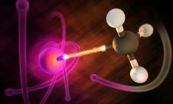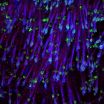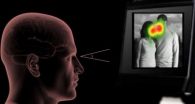(Press-News.org) LA JOLLA, CA AND JUPITER, FL—Scientists at The Scripps Research Institute (TSRI) and Hong Kong University of Science and Technology (HKUST) and their collaborators have found that ancient enzymes, known for their fundamental role in translating genetic information into proteins, evolved myriad other functions in humans. The surprising discovery highlights an intriguing oddity of protein evolution as well as a potentially valuable new class of therapeutic proteins and therapeutic targets.
"These new protein variants represent a previously unrecognized layer of biology—the ramifications of this discovery are now unfolding," said team leader Paul Schimmel, Ernest and Jean Hahn Professor of Molecular Biology and Chemistry at TSRI (California and Florida) who also holds an appointment at HKUST Jockey Club Institute for Advanced Study (IAS).
Mingjie Zhang, IAS Senior Fellow and Kerry Holdings Professor of Science, Division of Life Science at HKUST, added, "This breakthrough finding not only uncovers a vast area of new biology, but also provides opportunities to develop protein-based drugs for various human diseases associated with malfunctions of these newly discovered proteins. The successful collaboration among scientists from HKUST, TSRI and two biotech companies from the U.S. and Hong Kong also serves as a wonderful example of the close connections between basic research and biotechnology development."
The findings appear in the July 18, 2014 issue of Science.
Greater Complexity
The discovery concerns aminoacyl tRNA synthetases (AARSs), a group of 20 enzymes whose most basic function is to connect the nucleotide codes contained in genes to their corresponding protein building-blocks, namely, the 20 amino acids. Because AARSs are essential for the translation of genetic information into working proteins, they are found in all life forms on the planet.
Scientists have been finding evidence in recent years that AARS enzymes exist in greater complexity in more evolutionarily advanced organisms. In essence, these enzymes have acquired new segments or "domains." Curiously, these domains have no apparent relevance to protein translation. While largely absent in lower forms of life, these domains are added in a progressive and accretive way in evolution, in the long ascent over billions of years to humans.
To investigate further, Schimmel collaborated with colleagues at TSRI in California and Florida, HKUST (including at the IAS), the San Diego biotech company aTyr Pharma (which Schimmel co-founded), Stanford and the Hong Kong biotech company Pangu Biopharma (an aTyr subsidiary).
Using advanced, sensitive techniques, the team identified nearly 250 previously unknown gene-transcript variants of AARS in different human cell types. These variants, known as splice variants, are alternative assemblies of the discrete sequences of information (exons) contained in AARS genes. Genes frequently contain multiple exons that can be spliced together in alternative ways—thus in principle enabling a single active gene to encode multiple proteins with different functions. But the new findings suggest that evolution has been unusually prolific at creating AARS splice variants.
Potential New Class of Drug Targets
The team's further investigations revealed that the new AARS variants often are produced only in specific cell types such as brain or immune cells and/or appear only during certain stages of development.
Remarkably, most of the new splice variants lack entirely the standard "catalytic domain" that supports protein translation—confirming that they are not directly involved in that fundamental process. Initial screening of the biological activities of these variants hinted at a diversity of other functions. One variant selected for analysis turned out to be a powerful driver for the proliferation of muscle fiber cells in a laboratory dish.
Schimmel and his collaborators will now turn to more comprehensive studies of the new AARS variants and their specific functions. "We believe that these proteins have relevance to multiple human diseases," he said. "They thus represent a very important class of new protein therapeutics analogous to widely used injectable protein therapeutics such as growth hormone, insulin, erythropoietin (EPO) (which regulates red blood cell production) and granulocyte colony-stimulating factor (G-CSF) (which stimulates the bone marrow)."
INFORMATION:
The first author of the report, "Human tRNA synthetase catalytic nulls with diverse functions," was Wing-Sze Lo from the IAS-Scripps R&D Laboratory at HKUST and Pangu Biopharma. In addition to Schimmel and Zhang, other authors included Zhiwen Xu, Ching-Fun Lau, Feng Wang and Jie Zhou, also from the IAS-Scripps R&D Laboratory at HKUST and Pangu Biopharma; John D. Mendlein, Leslie A. Nangle and Kyle P. Chiang of aTyr Pharma; Kin-Fai Au, formerly at Stanford University and now at the University of Iowa; Wing Hung Wong of Stanford University; Min Guo of TSRI's Florida campus; and Elisabeth Gardiner and Xiang-Lei Yang from TSRI's California campus.
Funding for the research was provided by the Hong Kong Government's Innovation and Technology Fund (grants UIM181, UIM192 and UIM199), the National Foundation for Cancer Research, the National Institutes of Health (grants R01CA92577, R01GM088278, R01NS085092, R01HG005717 and R01GM100136), aTyr Pharma and Pangu Biopharma.
Scientists find protein-building enzymes have metamorphosed & evolved new functions
Previously unrecognized layer of biology could offer new drug targets
2014-07-17
ELSE PRESS RELEASES FROM THIS DATE:
A new stable and cost-cutting type of perovskite solar cell
2014-07-17
Perovskite solar cells show tremendous promise in propelling solar power into the marketplace. The cells use a hole-transportation layer, which promotes the efficient movement of electrical current after exposure to sunlight. However, manufacturing the hole-transportation organic materials is very costly and lack long term stability. Publishing in Science, a team of scientists in China, led by Professor Hongwei Han in cooperation with Professor Michael Grätzel at EPFL, have developed a perovskite solar cell that does not use a hole-transporting layer, with 12.8% conversion ...
Scientists complete chromosome-based draft of the wheat genome
2014-07-17
MANHATTAN, Kansas — Several Kansas State University researchers were essential in helping scientists assemble a draft of a genetic blueprint of bread wheat, also known as common wheat. The food plant is grown on more than 531 million acres around the world and produces nearly 700 million tons of food each year.
The International Wheat Genome Sequencing Consortium, which also includes faculty at Kansas State University, recently published a chromosome-based draft sequence of wheat's genetic code, which is called a genome. "A chromosome-based draft sequence of the hexaploid ...
Ultrafast X-ray laser sheds new light on fundamental ultrafast dynamics
2014-07-17
MANHATTAN, Kansas — Ultrafast X-ray laser research led by Kansas State University has provided scientists with a snapshot of a fundamental molecular phenomenon. The finding sheds new light on microscopic electron motion in molecules.
Artem Rudenko, assistant professor of physics and a member of the university's James R. Macdonald Laboratory; Daniel Rolles, currently a junior research group leader at Deutsches Elektronen-Synchrotron in Hamburg, Germany, who will be joining the university's physics department in January 2015; and an international group of collaborators ...
No evidence that California cellphone ban decreased accidents, says Colarado University Boulder researcher
2014-07-17
In a recent study, a researcher at the University of Colorado Boulder found no evidence that a California ban on using hand-held cellphones while driving decreased the number of traffic accidents in the state in the first six months following the ban.
The findings, published in the journal Transportation Research Part A: Policy and Practice, are surprising given prior research that suggests driving while using a cellphone is risky. For example, past laboratory studies have shown that people who talk on a cellphone while using driving simulators are as impaired as people ...
Peering into giant planets from in and out of this world
2014-07-17
Lawrence Livermore scientists for the first time have experimentally re-created the conditions that exist deep inside giant planets, such as Jupiter, Uranus and many of the planets recently discovered outside our solar system.
Researchers can now re-create and accurately measure material properties that control how these planets evolve over time, information essential for understanding how these massive objects form. This study focused on carbon, the fourth most abundant element in the cosmos (after hydrogen, helium and oxygen), which has an important role in many types ...
Help wanted: Principals who love change
2014-07-17
DALLAS (SMU) – Training principals for new roles is key to U.S. Department of Education school reforms, according to a new report by SMU researchers. But insufficient training and support for principals to meet the new expectations is leading to a leadership crisis. Twenty percent of newly minted principals leave the profession after two years and seasoned professionals are opting for early retirement.
Education researchers Lee Alvoid and Watt Lesley Black Jr. examine school districts at the forefront of supporting and training effective principals in their report "The ...
CNIO researchers discover a gene that links stem cells, aging and cancer
2014-07-17
An organism is healthy thanks to a good maintenance system: the normal functioning of organs and environmental exposure cause damage to tissues, which need to be continuously repaired. This process is not yet well understood, but it is known that stem cells in the organs play a key role, and that when repair fails, the organism ages more quickly. Researchers from the Spanish National Cancer Research Centre (CNIO) have "discovered one of the key genes that make up the maintenance mechanism for tissues" says Miguel Foronda, the first author of the manuscript.
The study ...
First ab initio method for characterizing hot carriers
2014-07-17
One of the major road blocks to the design and development of new, more efficient solar cells may have been cleared. Researchers with the Lawrence Berkeley National Laboratory (Berkeley Lab) have developed the first ab initio method – meaning a theoretical model free of adjustable or empirical parameters – for characterizing the properties of "hot carriers" in semiconductors. Hot carriers are electrical charge carriers - electrons and holes – with significantly higher energy than charge carriers at thermal equilibrium.
"Hot carrier thermalization is a major source of ...
Untangling spider's webs
2014-07-17
For decades, the story of spider evolution went like this: As insects became more and more diverse, with some species taking to the skies, spiders evolved new hunting strategies, including the ability to weave orb-shaped webs to trap their prey.
From that single origin, the story goes, orb-weaver spiders diverged along different evolutionary paths, leading to today, where several species weave similar – though not identical – webs.
It's a good story, but there's just one problem – Harvard scientists now know it's not true.
The largest-ever phylogenetic study of ...
Eye movements reveal difference between love and lust
2014-07-17
Soul singer Betty Everett once proclaimed, "If you want to know if he loves you so, it's in his kiss." But a new study by University of Chicago researchers suggests the difference between love and lust might be in the eyes after all.
Specifically, where your date looks at you could indicate whether love or lust is in the cards. The new study found that eye patterns concentrate on a stranger's face if the viewer sees that person as a potential partner in romantic love, but the viewer gazes more at the other person's body if he or she is feeling sexual desire. That automatic ...
LAST 30 PRESS RELEASES:
Groundbreaking discovery turns household plastic recycling into anti-cancer medication
Blocking a key inflammatory pathway improves liver structure and vascular function in cirrhosis, study finds
Continuous spread: Raccoon roundworm detected in nine European countries
HKUST Engineering researchers developed a novel photodetector to enhance the performance of on-chip light monitoring
Strategic river sensors could have forewarned of Texas Camp flood disaster
Drone sampling of whale breath reveals first evidence of potentially deadly virus in Arctic
Roman soldiers defending Hadrian’s Wall infected by parasites, study finds
Pinochet’s prisoners were tormented with music but still found solace in it, a new book reveals
Fertility remains high in rural Tanzania despite access to family planning
AI-assisted device can improve autism care access
Kinetic careers
Uncovering how parasitic plants avoid attacking themselves to improve crop resistance
Nanoparticle vaccine strategy could protect against Ebola and other deadly filoviruses
Study finds brain care score can predict risk of stroke across racial groups
Key lung immune cells can intensify allergic reactions
Do hormones explain why women experience more gut pain?
New materials conduct ions in solids as easily as in liquids
Breakthrough of the Year: Renewable energy begins to eclipse fossil fuel-based sources
LLM use is reshaping scientific enterprise by increasing output, reducing quality and more
Introducing LightGen, a chip for ultra-fast, ultra-efficient generative AI
Astronomers see fireworks from violent collisions around nearby star
ACC/AHA issue new guideline on managing congenital heart disease in adults
Cosmic crash caught on camera
Is talented youth nurtured the wrong way? New study shows: top performers develop differently than assumed
Ants: An untapped resource in the development of antibiotics?
Archaeologists use AI to create prehistoric video game
Mitochondria migrate toward the cell membrane in response to high glucose levels
Tiny viral switch offers hope against drug-resistant bacteria
Most parents aware of early peanut introduction guidelines, but confused about details
HPV vaccine can protect against severe lesions of the vulva and vagina
[Press-News.org] Scientists find protein-building enzymes have metamorphosed & evolved new functionsPreviously unrecognized layer of biology could offer new drug targets




